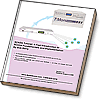Download our free Monitoring Fundamentals Tutorial.
An introduction to Monitoring Fundamentals strictly from the perspective of telecom network alarm management.
1-800-693-0351
Have a specific question? Ask our team of expert engineers and get a specific answer!
Sign up for the next DPS Factory Training!

Whether you're new to our equipment or you've used it for years, DPS factory training is the best way to get more from your monitoring.
Reserve Your Seat TodayMicrowave RF is an abbreviation for Microwave Radio Frequency. This refers to the frequencies over which microwave communications can take place. Microwave communication is widely used in telecommunications as a wireless transmission medium.
Microwave RF Technology Popular with Telecommunications Providers
Microwave RF technology was invented by Western Union. In the early 1940's, a message was sent from New York to Philadelphia via microwave RF. This transmission method provided for easy sending and receipt of microwave data, making it a popular choice for telecommunications service providers and later, companies in the broadcast industry.
Today, microwave RF technology is less widely used in the telecommunications industry. This is because satellite, cellular, and fiber-optic communication technologies now provide for more effective data transmission at many sites. However, at remote sites, such as those located in mountainous areas, microwave equipment is already in place and running wire would be very costly. In this case, microwave RF equipment provides the most economical transmission method.
Microwave RF can be either analog or digital. While digital is the newest microwave RF format, both transmission methods pose certain benefits for users.
Eliminate New Equipment Purchases with Analog Microwave RF
Because you've already paid for your analog RF equipment, and know how to use it, analog microwave RF may be most cost-effective transmission method for your remote sites. By sticking with the microwave RF equipment that is already deployed in your network, you'll avoid the time and expense of retraining your operators. They're likely already comfortable with this microwave RF equipment, and know its capabilities well, preventing the overburdening of your transport system when you try to operate a new and unfamiliar system.
Digital Microwave RF Provides Higher Transmission Capacity
Digital microwave RF is a more technologically advanced microwave data transmission method. Support for digital microwave RF is more readily available due to the fact that it is the newest microwave data format. The higher bandwidth of digital microwave RF provides for increased data transmission by supporting more verbose protocols. Digital microwave RF is faster, decreasing system poll time as well. With more reliable reporting, this format will help you consistently monitor your network communications. Finally, digital microwave RF provides for the dropping of LAN when your network expands outward to your microwave sites.
It is of critical importance that you provide visibility of your microwave network, no matter what microwave RF format you use. You must be aware if any of your microwave RF equipment goes offline, because a network outage causes you lost revenues. Build an alarm monitoring system for your microwave RF devices and you will reduce your customer churn by providing them with the ultra-reliable network they demand.
Secure Your Microwave RF Equipment with an Alarm Monitoring System
To provide for much-needed visibility of your microwave RF devices, you need an advanced monitoring system. The most advanced monitoring gear provides you with automatic alarm notifications whenever you lose visibility of your equipment. This will help you to quickly correct or even prevent reputation-damaging network outages. The alarm master is a critical component of an advanced monitoring system, as it will collect your important alarms, notifying you of even minor problems before they become major issues.
T/Mon NOC Brings in all of Your Microwave RF Alarms
T/Mon NOC is an advanced alarm master that can provide you with comprehensive microwave system visibility. T/Mon NOC is a multi-protocol master, and can monitor all of your protocols, saving you from deploying multiple expensive monitoring masters. Using multi-protocol support, you can bring all of your microwave RF alarms into T/Mon's comprehensive browser window, no matter what protocol is being used in your network.
T/Mon will instantaneously alert you of microwave RF transmission errors using automatic alarm notifications. This email or pagers alerts will include location and repair information, helping you get your data transmitting again as quickly as possible. You can also forward your microwave alarms as SNMP traps to a MOM. This will get your microwave network back online as quickly as possible, reducing lost revenues while your network is down. With a more reliable microwave system, you will reduce your customer churn, increasing your bottom-line revenues.
Deploy a T/Mon NOC and Increase Your Microwave Network Reliability
Your alarm master is critically important for monitoring your important microwave communications. You need the most advanced system available to monitor your microwave RF equipment. T/Mon NOC will give you the visibility your network demands. Deploy a T/Mon NOC, and maximize your network reliability.
